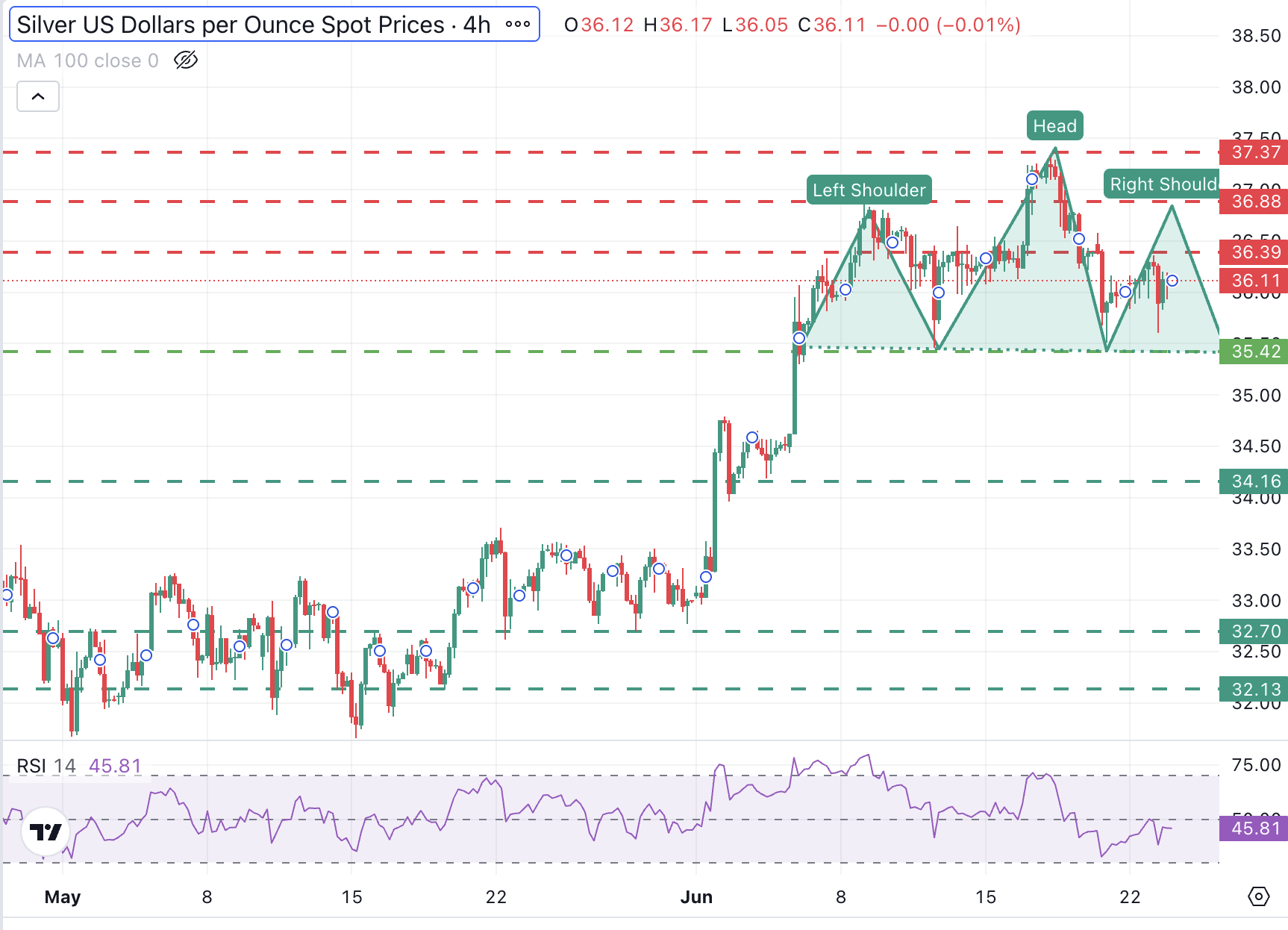Silver Price Forecast: XAG/USD has a key support level at $35.50
- Silver is hesitating below $36.40 with risk appetite undermining demand for safe havens.
- US Dollar’s weakness is keeping Silver prices from depreciating further.
- XAG/USD: A breach of $35.50 would confirm a bearish H&S formation.
Silver (XAG/USD) is bouncing up from a key support area at $35.50 on Tuesday, following a three-day reversal from multi-year highs at $37.35. The pair is drawing support from US Dollar weakness amid the risk-on mood, but the weak demand for safe havens is also keeping Silver upside attempts limited.
Investors are celebrating what the US President, Donald Trump, announced as a “complete and total ceasefire”, which only hours later is under threat amid accusations of violation from Iran. Israel has vowed a strong response in case of attack, but so far, risk appetite prevails.
On the macroeconomic domain, further calls for Fed easing, this time from the Vice Chair for Supervision Bowman, have underscored the divergence within the Federal Reserve’s committee and increased bearish pressure on the US Dollar ahead of Powell’s testimony to Congress, due later today.
XAG/USD: The $35.50 is the neckline of a bearish H&S formation
A look at the 4-hour charts, and we see the pair moving without a clear bias, with upside attempts limited at below Monday’s high, at $36.40. The Doji candles on the daily chart indicate a hesitant market following a three-day reversal from long-term highs.
The broader trend remains positive, but the lower highs this week anticipate a potential Head & Shoulders pattern, which is often a signal of a trend shift. A break of the neckline, at $35.50, suggests that there is room for a deeper correction, aiming at $34.10 (June 4 low) and the $32.70 area, which held prices on May 22, 27, 28 and 30.
XAG/USD 4-Hour Chart

Silver FAQs
Silver is a precious metal highly traded among investors. It has been historically used as a store of value and a medium of exchange. Although less popular than Gold, traders may turn to Silver to diversify their investment portfolio, for its intrinsic value or as a potential hedge during high-inflation periods. Investors can buy physical Silver, in coins or in bars, or trade it through vehicles such as Exchange Traded Funds, which track its price on international markets.
Silver prices can move due to a wide range of factors. Geopolitical instability or fears of a deep recession can make Silver price escalate due to its safe-haven status, although to a lesser extent than Gold's. As a yieldless asset, Silver tends to rise with lower interest rates. Its moves also depend on how the US Dollar (USD) behaves as the asset is priced in dollars (XAG/USD). A strong Dollar tends to keep the price of Silver at bay, whereas a weaker Dollar is likely to propel prices up. Other factors such as investment demand, mining supply – Silver is much more abundant than Gold – and recycling rates can also affect prices.
Silver is widely used in industry, particularly in sectors such as electronics or solar energy, as it has one of the highest electric conductivity of all metals – more than Copper and Gold. A surge in demand can increase prices, while a decline tends to lower them. Dynamics in the US, Chinese and Indian economies can also contribute to price swings: for the US and particularly China, their big industrial sectors use Silver in various processes; in India, consumers’ demand for the precious metal for jewellery also plays a key role in setting prices.
Silver prices tend to follow Gold's moves. When Gold prices rise, Silver typically follows suit, as their status as safe-haven assets is similar. The Gold/Silver ratio, which shows the number of ounces of Silver needed to equal the value of one ounce of Gold, may help to determine the relative valuation between both metals. Some investors may consider a high ratio as an indicator that Silver is undervalued, or Gold is overvalued. On the contrary, a low ratio might suggest that Gold is undervalued relative to Silver.


